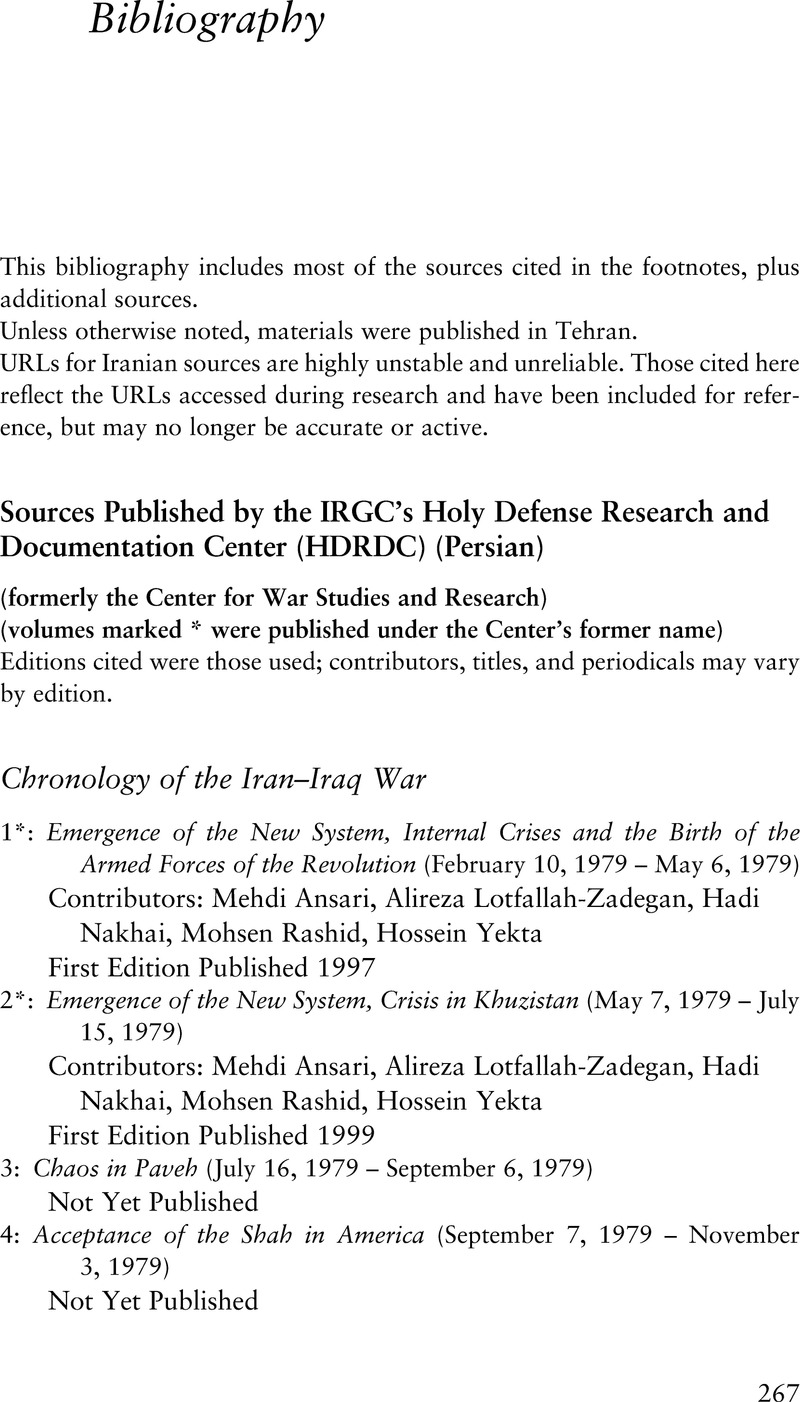Book contents
- The Unfinished History of the Iran–Iraq War
- The Unfinished History of the Iran–Iraq War
- Copyright page
- Contents
- Map of Iran
- Notes on Translation, Transliteration, and Citation
- List of Abbreviations and Key Terms
- Names of Key Figures
- Chronology
- Acknowledgments
- Introduction
- 1 Guards
- 2 Historians
- 3 Striking While the Revolution’s Hot
- 4 Willing and Unable
- 5 The Epic of Khorramshahr
- 6 Pursuing the Aggressor
- 7 War for Peace
- 8 An End to a War Without End
- 9 Faith and Firepower
- 10 The Holy Defense Continues
- 11 Unfinished History
- 12 Keeping the War Alive
- Bibliography
- Index
- References
Bibliography
Published online by Cambridge University Press: 08 October 2021
- The Unfinished History of the Iran–Iraq War
- The Unfinished History of the Iran–Iraq War
- Copyright page
- Contents
- Map of Iran
- Notes on Translation, Transliteration, and Citation
- List of Abbreviations and Key Terms
- Names of Key Figures
- Chronology
- Acknowledgments
- Introduction
- 1 Guards
- 2 Historians
- 3 Striking While the Revolution’s Hot
- 4 Willing and Unable
- 5 The Epic of Khorramshahr
- 6 Pursuing the Aggressor
- 7 War for Peace
- 8 An End to a War Without End
- 9 Faith and Firepower
- 10 The Holy Defense Continues
- 11 Unfinished History
- 12 Keeping the War Alive
- Bibliography
- Index
- References
Summary

- Type
- Chapter
- Information
- The Unfinished History of the Iran-Iraq WarFaith, Firepower, and Iran's Revolutionary Guards, pp. 267 - 297Publisher: Cambridge University PressPrint publication year: 2021



